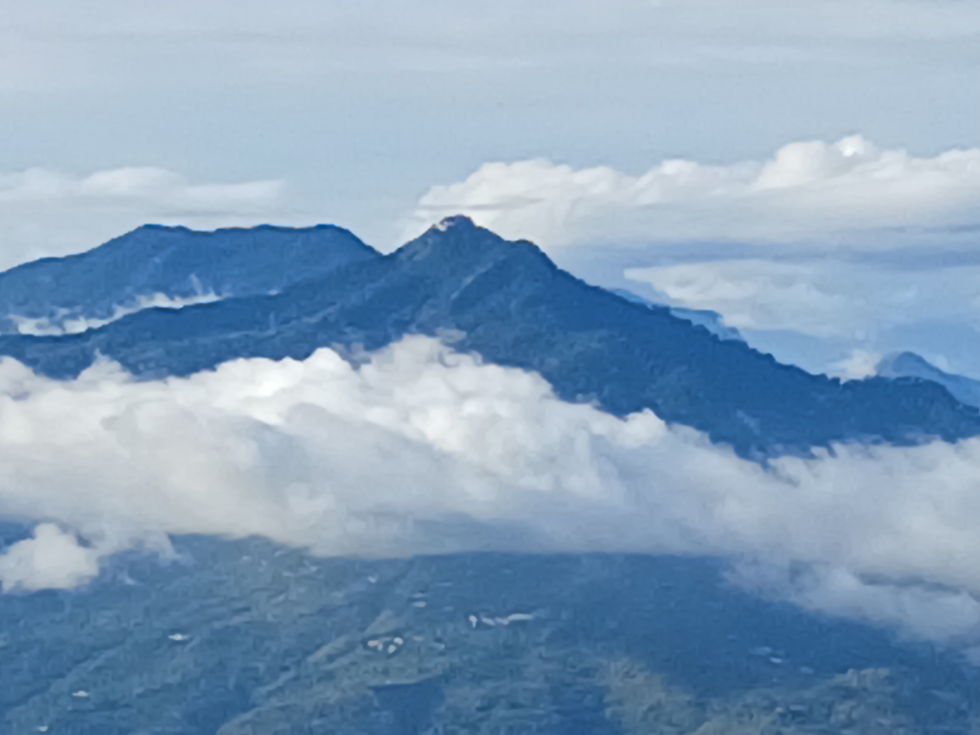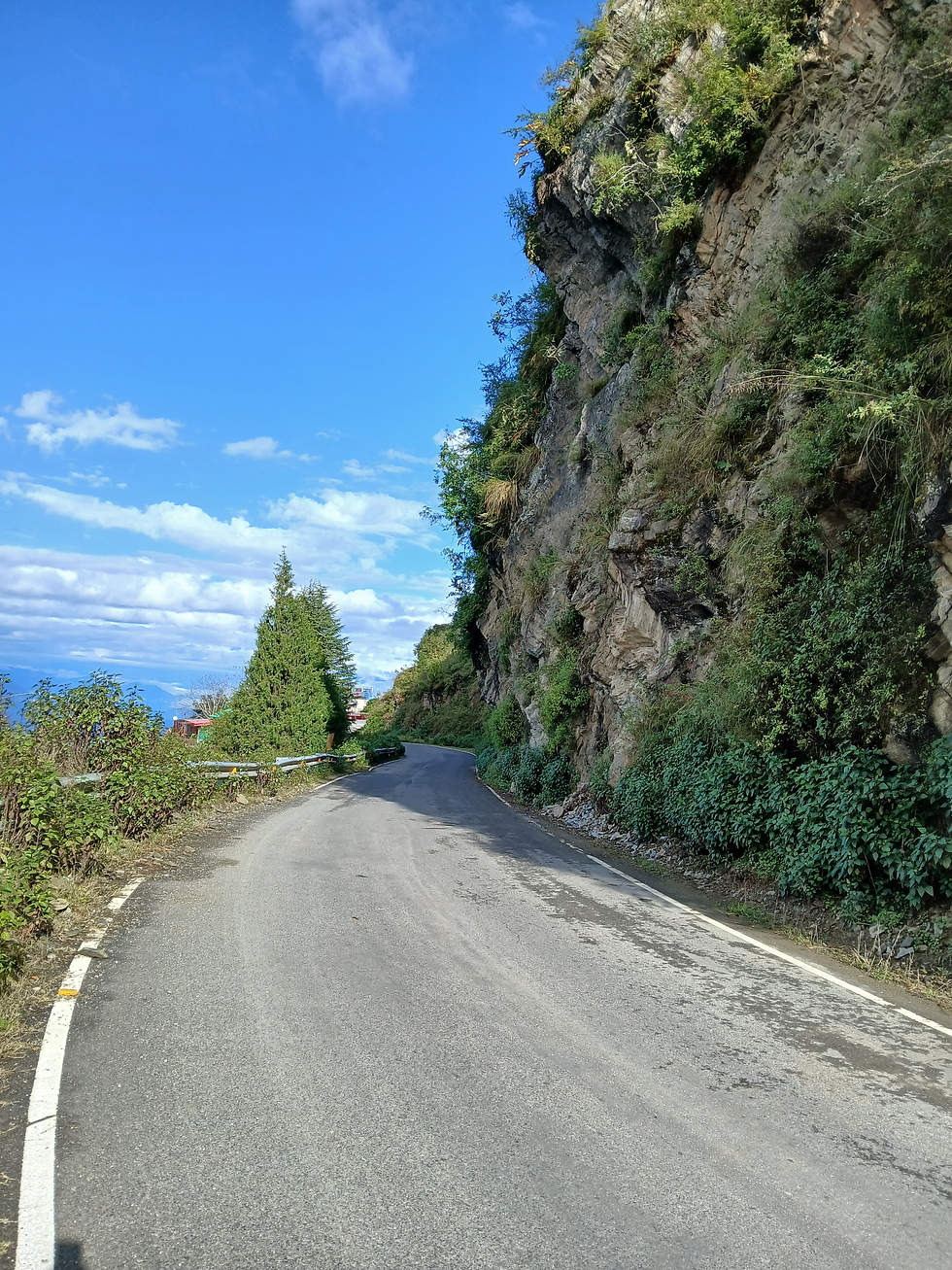Misty Mountains: Dancing in a semi-circle
- Independent Ink

- Oct 18
- 7 min read

Culture in the Uttarakhand hills is not a static museum piece but a living stream flowing through generations. Each beat of the dhol, swirl of the ghagra, and chant of ritual song conveys not merely performance, but a declaration of life, resilience, and aesthetic celebration.
By Suresh Nautiyal Greenananda in Pauri Garhwal
The folk traditions of Uttarakhand, though profoundly rich and diverse, have historically not received the recognition or institutional support accorded to folk traditions in several other Indian states. Until the attainment of statehood in the year 2000, Uttarakhand's cultural heritage remained largely peripheral within the broader political and cultural framework of its parent state, Uttar Pradesh.
And yet, the Himalayan mountains have nurtured a living archive of art, dance, song, and ritual, which continues to shape the collective identity, social cohesion, and spiritual wisdom of the region's multifarious communities.
Origins of Folk Traditions
The origins of Uttarakhand's folk traditions, particularly its vibrant array of folk dances, resist precise chronological delineation. They are not products of singular historical moments but rather the result of a protracted, dynamic process of cultural evolution.
From an anthropological standpoint, the folk traditions are ritualised expressions of collective memory, social organisation, and ecological adaptation. The communities of Uttarakhand, drawn from a variety of ethnic, linguistic, and occupational groups, carried their distinctive traditions, religious observances, and artistic expressions into the Central Himalayan context. Over centuries, these cultural practices were not merely transplanted but dynamically transformed through interaction with local deities, festivals, ecological rhythms, and mountain topographies.
Sociologically, these folk traditions were far more than a form of entertainment. They functioned as vital instruments for social cohesion, mechanisms for transmitting oral traditions, and platforms for collective participation, particularly in largely illiterate communities.
Agricultural cycles, mythological narratives, and moral codes were encoded within dance and song, ensuring the continuity of cultural values across generations. Situated historically along important pilgrimage routes and migration corridors, the region absorbed multiple influences—from Indo-Aryan and tribal traditions to devotional Bhakti movements—while maintaining a core ethos characterised by reverence for nature, cyclical renewal, and affirmation of community identity through art.
Even in contemporary times, Uttarakhand's folk traditions exemplify what the anthropologists term as cultural resilience—the capacity of communities to sustain their identity while simultaneously accommodating change.

Examples of Folk Expression
Langvir Nritya exemplifies martial vigour and acrobatic dexterity. Originating in the Tehri Garhwal region, this male-performed dance involves climbers scaling fixed bamboo poles, balancing on their stomachs, and executing acrobatic stunts to the rhythm of traditional instruments such as the Dhol and Damau. Langvir Nritya continues to animate local festivals, reflecting both physical prowess and communal pride.
Pandava Nritya, rooted in the epic Mahabharata, blends storytelling, music, song and dance into a narrative performance. Predominantly performed by men from historically marginalised communities in Garhwal, this dance conveys episodes of the epic using elaborate costumes and masks to portray the Pandavas, fostering both cultural memory and performative dramatisation.
Jhora and Chholiya—two prominent Kumaoni dances—demonstrate the collective and martial dimensions of folk performance. Jhora, performed by men and women in circular formations, celebrates spring, weddings, and local fairs, reinforcing social harmony through synchronised movement and rhythmic accompaniment from the hurka drum.
Chholiya, a vigorous sword dance with origins over a millennium ago, portrays martial prowess through mock combat, accompanied by instruments such as Turi, Ransingha, and Dhol, and is performed during weddings and auspicious ceremonies as a living symbol of cultural pride.
Chhopati songs and dances reflect love and bonding, and the social life and adaptive resilience of the mountains. Typically, playful and flirtatious, these songs facilitate courtship and social interaction, capturing local norms, humour, and relational dynamics.
Chanchari dance, prevalent in both Kumaon and Garhwal, exemplifies slow, semi-circular group formations, integrating song and movement to narrate themes of love, devotion, and community celebration.
Similarly, Barada Nati from Jaunsar-Bawar is performed by men and women in synchronised semi-circular formations during festivals, embodying ritualised grace and visual splendour.
In a nutshell, Uttarakhand's folk dance traditions are not static relics but living archives that resonate with the rhythms of daily life, the spiritual ethos of the mountains, and the enduring human impulse to celebrate existence through movement, music, lyricism, poetry, and collective expression.

Interconnections and Regional Nuances
While Garhwal, Kumaon, and Jaunsar display distinct cultural idioms, they share an underlying philosophical and historical coherence. Kumaon, for example, celebrates Holi with remarkable multiplicity: Baithaki Holi emphasises classical ragas, Khari Holi features energetic group singing, and Mahila Holi foregrounds women's active participation.
Garhwal and Jaunsar, in contrast, observe comparatively subdued Holi rituals, privileging other festivals such as Bagwal in Devidhura and Magh Mela in Uttarkashi.
Similarly, Chholiya epitomises Kumaoni identity, while Langvir and Pandava Nritya are emblematic of Garhwal, and Jaunsar preserves ritualised performances linked to its distinct socio-ethnic heritage.
This interregional interplay demonstrates a principle central to Uttarakhand's cultural landscape—diversity operates not as fragmentation but as complementary variation. Across regions, the cultural currents converge, forming a composite identity that is both variegated and unified.
Artists as Custodians of Heritage
Artists are the living vessels of Uttarakhand's cultural continuum, embodying its music, dance, theatre, visual arts, crafts, and oral traditions. Each artist simultaneously preserves heritage and shapes contemporary relevance.
Their contributions are neither uniform nor mutually comparable; they range from faithful custodianship of traditional forms to innovative reinterpretations that engage modern audiences or integrate classical and folk idioms. Collectively, these efforts form a continuum wherein heritage evolves rather than stagnates.
Cultural life, like a mountain river, accrues depth and richness from countless tributaries—singers who sustain folk melodies in village squares, dancers who animate mythological narratives, craftsmen who encode communal identity in objects and patterns, and storytellers who perpetuate collective memory.

These cumulative contributions have rendered Uttarakhand's cultural heritage layered, resilient, and ever-evolving.
Modern luminaries such as Chandra Singh Rahi, Narendra Singh Negi, Preetam Bharatwan, Gopal Babu Goswami, and Heera Singh Rana transformed folk music into vehicles of identity, memory, and social commentary. Madhuri Barthwal and Basanti Bisht preserved sacred ritualistic singing, while Jeet Singh Negi, hailed as the father of modern Uttarakhandi music, expanded folk repertoires through innovative compositions.
Theatre practitioners such as Mohan Upreti popularised Kumaoni folk theatre nationally and internationally. Meanwhile, visual artists, weavers, and craftspeople sustain practices such as Aipan, wood carving, and traditional weaving, creating tangible expressions of intangible heritage.
Contemporary playwrights, filmmakers, and musicians—Lalit Mohan Thaplyal, Rajendra Dhasmana, Parashar Gaur, (Suresh Nautiyal – that is, me), and Dinesh Bijalwan, among others—address pressing contemporary issues such as ecological crisis, migration, and social transformation, demonstrating the living adaptability of traditional culture.
This intergenerational dialogue between past and present underscores a vital principle—culture is not ornamental; it is integral to identity, social memory, and communal vitality.

Recognition and Global Engagement
Despite its richness, Uttarakhand's folk heritage has yet to secure substantial recognition across the nation, and internationally. Decades of marginalisation and fragmented policy support have hindered systematic promotion.
Nevertheless, emerging initiatives offer hope. For instance, traditional Dhol players from remote villages have taught at international institutions, revealing a global appetite for authentic cultural expressions, when presented with sensitivity and professionalism. Such developments affirm the potential of Uttarakhand's folk arts to attain national and international recognition without compromising its intrinsic integrity.

Folk Dances as Cultural Synthesis
Uttarakhand's folk dances are more than performative spectacles—they are living embodiments of the region's worldview, social structures, and historical experience. They represent a meeting ground for multiple cultural streams, harmonising diverse influences into cohesive expressions of collective identity.
The state's Bhotia, Buxa, Garhwali, Jaunsari, Kumaoni, Raji, Vanrawat, Tharu, and other communities, alongside more recent migrant groups such as Gurkhas, Bengalis, and Punjabis, have contributed to a continuously evolving cultural mosaic. These dances thus reflect both continuity and assimilation, maintaining identity while embracing adaptive change.
Costumes and Ornaments: Symbols of Identity
The diversity of Uttarakhand's ethnic and socio-cultural groups manifests vividly in costumes and ornaments. While the Pichhora, the Ghagras with silver embellishments, and the woollen attires of the Kumaon, Garhwali and Bhotiya communities exemplify regional specificity, the Jaunsari jewellery and headgear convey ritual significance.
And, the material choices—wool, cotton, silver—reflect ecological and trade realities. Beyond aesthetics, costumes and ornaments encode history, social structure, and ecological adaptation, underscoring the integral role of material culture in performance.
Despite regional variation, a shared aesthetic of colour, rhythm, and symbolic resonance unites the state's folk traditions, reflecting a deeper cultural coherence.

Creativity, Institutions, and Future Prospects
While many individuals contribute to sustaining the rich folk traditions, its transformative impact remains limited. Innovations and experiments exist, yet systemic support is inadequate.
There is an urgent need for functional, well-resourced government academies encompassing fine arts, performing arts, and literature. Without institutional backing, coordination, and nurturing, the future of Uttarakhand's folk traditions remains precarious.
Heritage, Marginalisation, and Civilisational Value
Historically, Uttarakhand's culture has been marginalised. Mountain and forest cultures across India have often been overlooked in favour of plains-based traditions. This neglect represents not merely cultural oversight but sociological loss, as folk arts transmit ecological knowledge, historical memory, and social values.
Recognising and supporting these traditions is thus an act of civilisational affirmation, honouring communities that sustain their heritage despite structural neglect. Collectively, they exemplify the Himalayan ethos of reverence for nature, community solidarity, and cyclical living.

Epilogue: Culture as Living Heritage
Culture is not a static museum piece but a living stream flowing through generations. Each beat of the dhol, swirl of the ghagra, and chant of ritual song conveys not merely performance, but a declaration of life, resilience, and aesthetic celebration.
Valleys echo into valleys, rivers converge, and communities shape one another through shared memory and practice. Here, diversity is not fragmentation, but harmony.
In the face of modernity, migration, and ecological challenge, these traditions offer models of resilience, environmental balance, and collective joy. They teach that identity strengthens unity, that roots nourish growth, and that heritage illuminates the path forward rather than anchoring it in the past.
Heritage, in this sense, is a guiding light, not a weight; a creative and collective expression, and the celebration of acts of continuity, remembrance, and hope. When communities sing, dance, and perform together, they do not merely recall ancestors and memories —they plant seeds for generations yet to come.

Based in Delhi and Green Dham in Pauri, Suresh Nautiyal Greenananda—a journalist for over four decades, is a socio-political activist and literary figure rooted in the Himalaya. He has authored more than twenty plays in Hindi, English, and Garhwali, alongside hundreds of essays and poems. He writes on issues about human struggle, ecological crises, green politics, democracy, marginalised communities, and folk heritage. His poems have been published in the USA, Finland, and India, and his plays have been staged across Delhi, Uttarakhsand and elsewhere—reviving Uttarakhand’s dances, costumes, and oral traditions as
Photos by Suresh Nautiyal.



